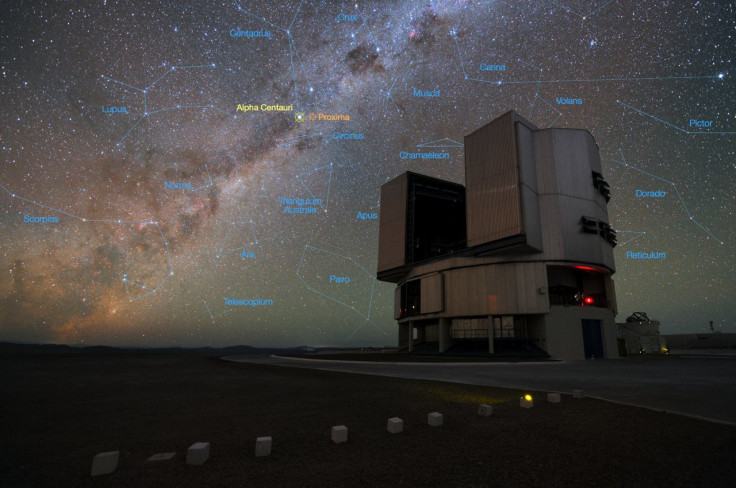ESO and Breakthrough Initiatives to hunt for planets in our neighbouring solar system, Alpha Centauri
Very Large Telescope will be used to look at the star system and consider the best targets for exploration.
Scientists are preparing to hunt for more planets within Alpha Centauri, our closest star system. The ESO and Breakthrough Initiatives has signed an agreement to use the Very Large Telescope (VLT) in Chile to explore the system in the hopes of better selecting targets for exploration in the future.
The Breakthrough Starshot programme was announced in April last year by Professor Stephen Hawking and tycoon Yuri Milner. It involves sending mini space probes to Alpha Centauri within the next generation.
Understanding how many planets our neighbouring solar system has will be paramount to launching any mission, so together experts from the ESO and Breakthrough Initiatives will work to find out as much out about Alpha Centauri before any missions are launched.
Last year, scientists announced the discovery of Proxima b, a planet orbiting Proxima Centauri – the faintest star within the system. The find gained widespread media attention as the planet was within the 'Goldilocks' zone of the star, making it potentially habitable.
Detecting planets, however, is not easy - the brightness of stars can make them too dim to detect. With a few upgrades to its VISIR instrument (which observes in the mid-infrared wavelength range), the VLT will be able to detect these planets.

Breakthrough Initiatives will largely pay for this upgrade, while the ESO will provide the required time and observational capabilities. They expect a "careful search programme" to be carried out in 2019.
The Breakthrough Starshot programme involves the development of tiny spacecraft that can travel far faster than is currently possible with traditional technology. The missions will involve sending probes to reach the system – which is 25 trillion miles away – within 30 years.
When the programme was announced, Douglas Vakoch, president of METI International, told IBTimes UK: "By sending hundreds or thousands of space probes the size of postage stamps, Breakthrough Starshot gets around the hazards of spaceflight that could easily end a mission relying on a single spacecraft. Only one nanocraft needs to make its way to Alpha Centauri and send back a signal for the mission to be successful. When that happens, Starshot will make history."

© Copyright IBTimes 2024. All rights reserved.






